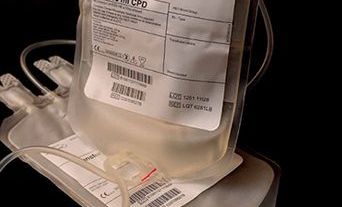'Digital pathology is the future, and it always will be’ was the trying-to-be-funny aphorism I often used at conferences in the 2000s, noting the slow progress of whole slide imaging toward clinical adoption. But as we mark five years of digital pathology at the College, it is truly coming to the fore as an essential technology in our laboratories.
Despite early success at creating instruments to capture whole slide images (WSI) of pathology slides in the mid-1990s, digital pathology has only matured into a viable clinical tool in the last decade. Anticipating both the opportunities and the challenges presented by digital pathology, Professor Jo Martin as then-President proposed the College should create a Digital Pathology Lead position in 2017, to which I was honoured to be appointed.
Guidelines on digital pathology practice
The immediate priority for us as at the College as to address the growing need for guidance in the use of digital pathology in clinical practice. Although pathologists around the world had started to adopt digital pathology, particularly in places where an acute shortage of pathologists was already being experienced (e.g. Sweden), there was some uncertainty about how to safely deploy it for diagnosis.
The guidance – created by a committee of experts with a range of skills and experience in technology, laboratory operations, quality assurance and medicolegal issues – balanced the need for digital pathology with the uncertainty and lack of experience with the technology at that time.1
As is normal for College guidance, our document was circulated to all College Fellows for review and comment. The feedback received from digital enthusiasts was that the guidance would help them to go digital; the feedback from the digital sceptics, who were worried about unsafe or uncontrolled use, was that the guidance ensured safe adoption. As a committee, we took that as a sign that we had found the right balance!
The guidance is broad, based on a systematic review of the literature and covering a wide range of topics including pathology diagnosis, risk management, information technology, hardware devices and quality assurance. To help the College community understand and implement them, we held three in-person workshops on going digital, with more planned in future. Our work has also influenced digital pathology guidelines in professional societies across the world that recognise the need to deploy digital pathology safely.
Growing use of digital pathology
There is a truism that change happens slowly, then all at once (or ‘gradually, then suddenly’). Digital pathology has followed this pattern. Deployments of digital pathology are growing rapidly around the world, including in the NHS, which, thanks to investments across the country, is poised to be a leader in the real-world use of WSI.
At Leeds, we have noted that the questions asked by attendees at our hands-on digital pathology training sessions2 have moved over time from ‘should we go digital?’ to ‘how do we go digital?’ We hope that the College guidance has helped in this regard.
In 2019, the College then broadened its activities in digital pathology with the Digital pathology strategy 2019,3 which mapped activity in the four main College priority areas – ‘Education, training and research’, ‘Excellence and knowledge in pathology practice’, ‘Increasing the College’s influence through a clear, coherent, professional voice’ and ‘Resourcing the future of the College’. This strategy is central to the work we undertake.
An important achievement has been the creation of the College’s Digital Pathology Committee, which includes experts who have deployed digital pathology in their own laboratories, representatives of other College functions (training, exams, subspecialties) and other stakeholders such as NHS Digital and the Institute of Biomedical Science.4
By engaging with NHS bodies and the Government, the College has been instrumental in making the case for investment in pathology on behalf of the profession, including supporting investments in digital pathology that will help with the serious workforce issues we currently face.
An important function is advising the NHS and Government, not only on aspects of digital pathology itself, but also on wider issues such as the importance of pathology in supporting research and clinical trials. High-quality pathology services underpinned by digital investment have the potential to grow the UK life sciences industry.

Digital technology as an enabler
As the COVID-19 pandemic spread around the world, we recognised the unique possibility that digital technologies offer to help with the unique challenges in delivering pathology services while maintaining social distancing.
Labs with digital scanners were able to switch to remote multidisciplinary team (MDT) meetings without the need to install new equipment. They were able to maintain training activities with virtual multi-header training and reporting sessions, and facilitate service delivery by remote working.
Our rapid response to COVID-19 was led by Dr Bethany Williams. It was published on 23 March 2020, a matter of weeks after the scale of the pandemic’s impact on healthcare was realised.5,6 Based on the same risk assessment and reduction principles as the initial guidelines, the response allowed labs to diagnose remotely during this period of critical service need while maintaining safety and it is still in place to facilitate the safe use of digital pathology.
Behind the scenes, the College has also given advice to College Fellows and laboratories on specific questions in areas as diverse as remote working, advice on using digital pathology to address work-related health issues and employment issues, and queries on validation and procurement of digital pathology.
Digital pathology in the future
We are just beginning to see proper adoption in the NHS of digital pathology. But the need for further investment so the whole NHS can use digital pathology is still there, and the College regularly lobbies for this. The workforce challenges we face have continued to grow but we are starting to see digital pathology help with clinical practice in several regions.
The College will continue our activities in the four strategic areas we have set out. Specifically, in the medium term our committee will work on education and training in digital pathology for our Fellows, facilitating the move toward digital exams to maintain our high standards. College-run training activities will support our members to understand and use digital pathology. Another key area of work is developing standards for digital pathology and data.
Further underlining the gradual-then-sudden nature of technological developments, AI has made huge leaps forward in the relatively short period since deep learning was first shown to surpass human performance in the game Go.7These technologies have shown great promise in pathology with their ability to analyse whole slide images, including the hitherto insurmountable task of reading H&E slides to detect or diagnose diseases.
AI is a technology with significant potential to improve healthcare. The College will uphold the key principle that pathologists must safely and effectively lead the adoption of AI for patient benefit. AI requires continued and increased investment in digital pathology and pathology labs. It will require the time and expertise of human pathologists to use the tools but also to develop them.
Just as laboratories are going digital, they also need to consider the use of AI in clinical practice. This is an exciting time but also one that brings challenges for us as a profession. With the rapid introduction of two revolutionary digital technologies in cellular pathology diagnosis – whole slide imaging and artificial intelligence – there is much for the College to do. It is safe to say that digital pathology was the future, once.




